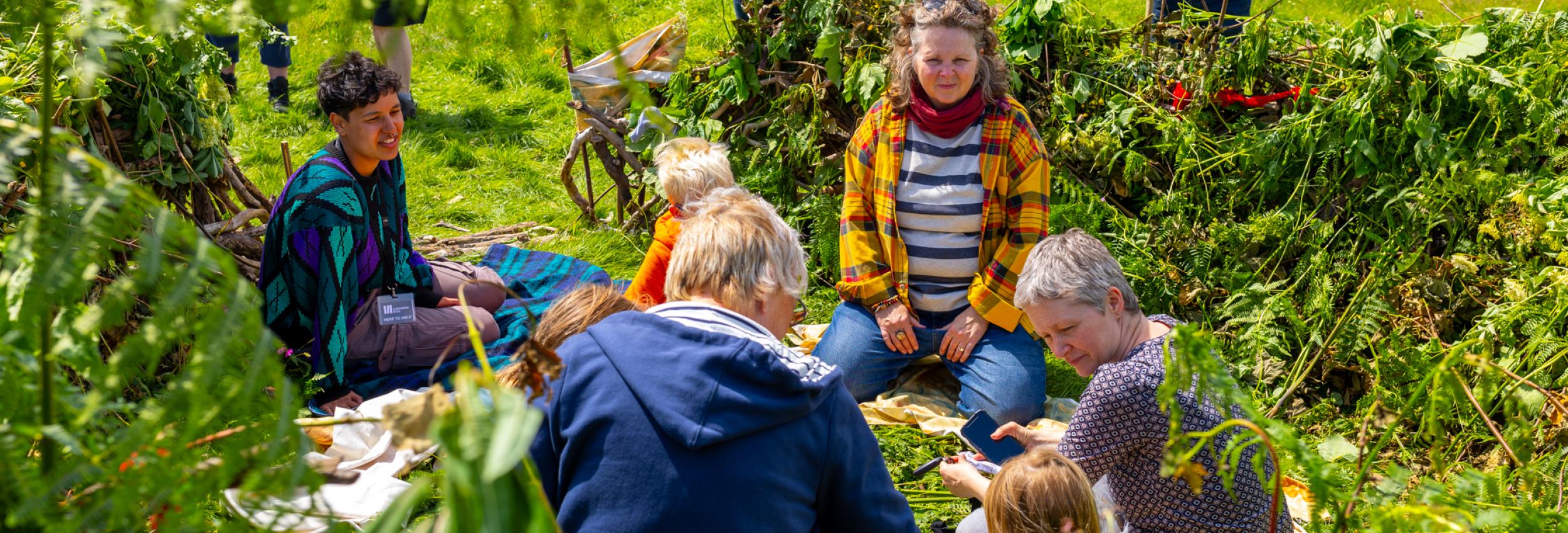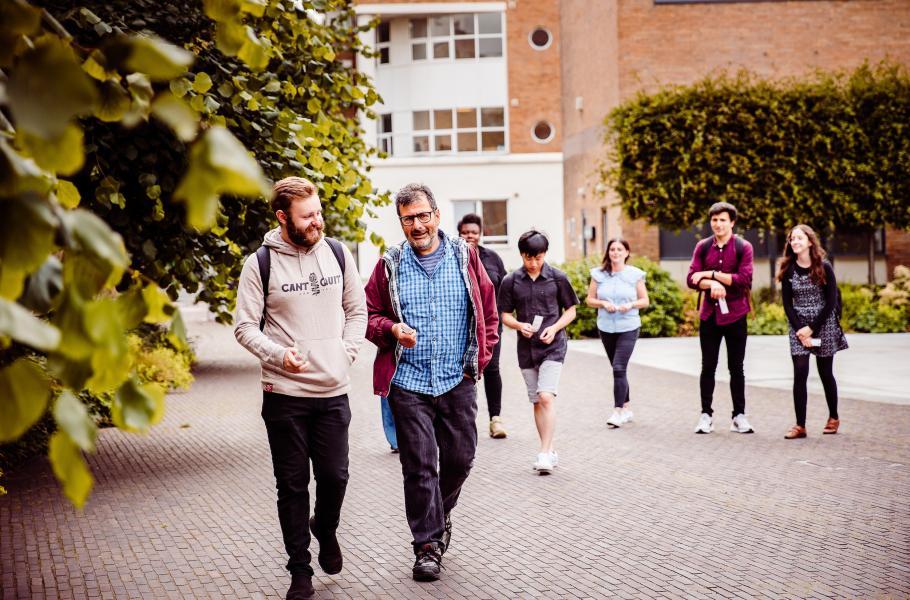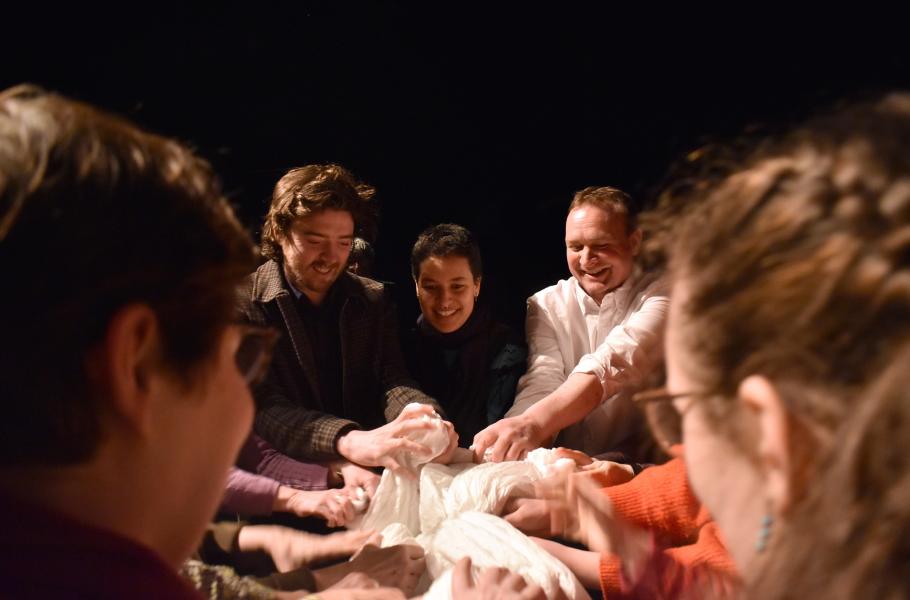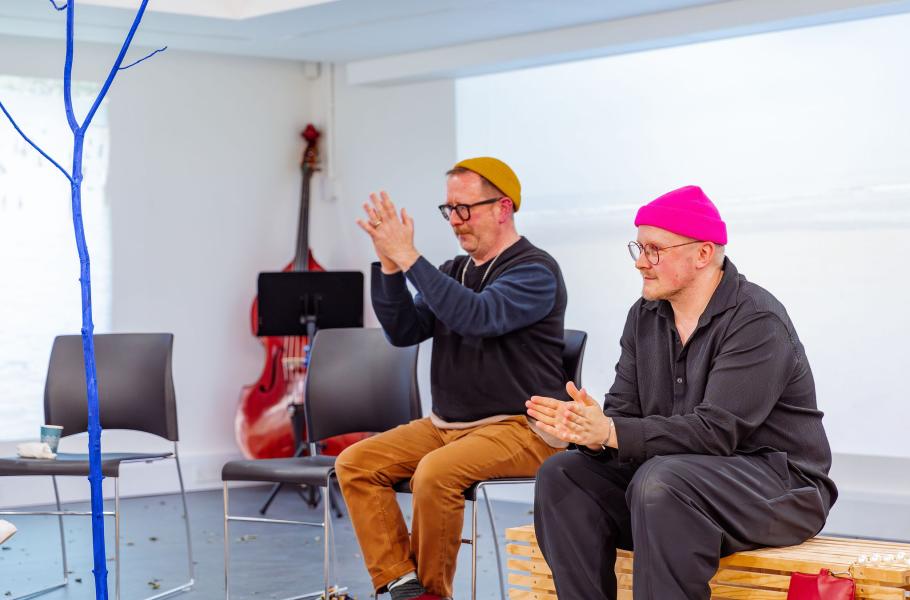Nest: Exploring belonging by building together
North-East based Finnish artist Henna Asikainen has been working with Lancaster Arts since December 2023. Her artwork is concerned with humans’ complex relationship with nature and its intersections with social justice, climate justice, migration and notions of belonging. In this blog, she reflects on how the invitation to build a nest together has provided an opportunity for people to come together to engage with these complex ideas through a physical, collaborative act.
Henna first conceived the idea of Nest when invited to create work exploring people’s connection to nature as part of Landing, commissioned by Lancaster Arts and We Live Here in 2024. Alongside Nest, she was supported through Lancaster Arts’ Growing Voices programme to explore more fully the notion of making an invitation to participate through an artwork, and what might make an invitation ‘successful’. Her exhibition Lintukoto / Haven is at the Peter Scott Gallery until 16 May, and she will be running a practical workshop on the afternoon of 1 May, 2-4pm (book here).
"The bird a nest, the spider a web, (hu)man friendship"
William Blake
Nest is a participatory project that brought together different communities across four different locations to collaboratively build human-sized nests from foraged natural materials.
Birds’ nestsare evocative metaphors for many things - home, belonging, protection and sustainability. They form a poignant and accessible metaphor around which to situate the project. Despite their temporary nature, nests are invested with care - intricate, beautiful, protective structures. Each species has its own construction methods, favouring certain materials yet always constructed from what is available locally. These magical architectural creations, abandoned by the end of the summer, invite us to reflect on the nature of home. They invite us to ask questions about both the temporality of home and its endurance, about our own investment in home and its life-affirming nature, and about what it means to be without a home, to be at home, and to journey away from it. When encountering an empty nest, one cannot but wonder about what happened there, who lived there, where they are now and how are they living.
Blake's words, "the bird a nest, the spider a web (hu)man friendship", resonate with this project, underscoring our intricate, interwoven connection to the natural world and the indispensable role of community. The imagery of nests and webs evokes the tangled, delicate and complex nature of belonging – fragile yet fundamental, intricate and essential. It points to the many acts and contradictions that constitute belonging and suggests that it is in friendship – in community, in hospitality – that home is made.
From summer 2024 until March 2025, I worked with different communities to create four human-sized nests in distinct locations. Together, we explored ideas of home and belonging through the embodied, collective act of nest-building. The first event took place in Heysham, on Morecambe Bay in a beautiful stretch of land under the care of the National Trust. The Heysham Barrows overlooks the sea and is juxtaposed against the backdrop of a nuclear power station and an ancient chapel, creating a compelling contrast between natural, industrial and historical elements. The second event unfolded on a bleak overcast day on a beach in Morecambe. The third gathering was held at Burton Bushes Nature Reserve in Hull, against the iconic backdrop of the Humber Bridge, as part of the city’s Freedom Festival. Finally in March 2025, we built a nest inside the Peter Scott Gallery at Lancaster Arts.
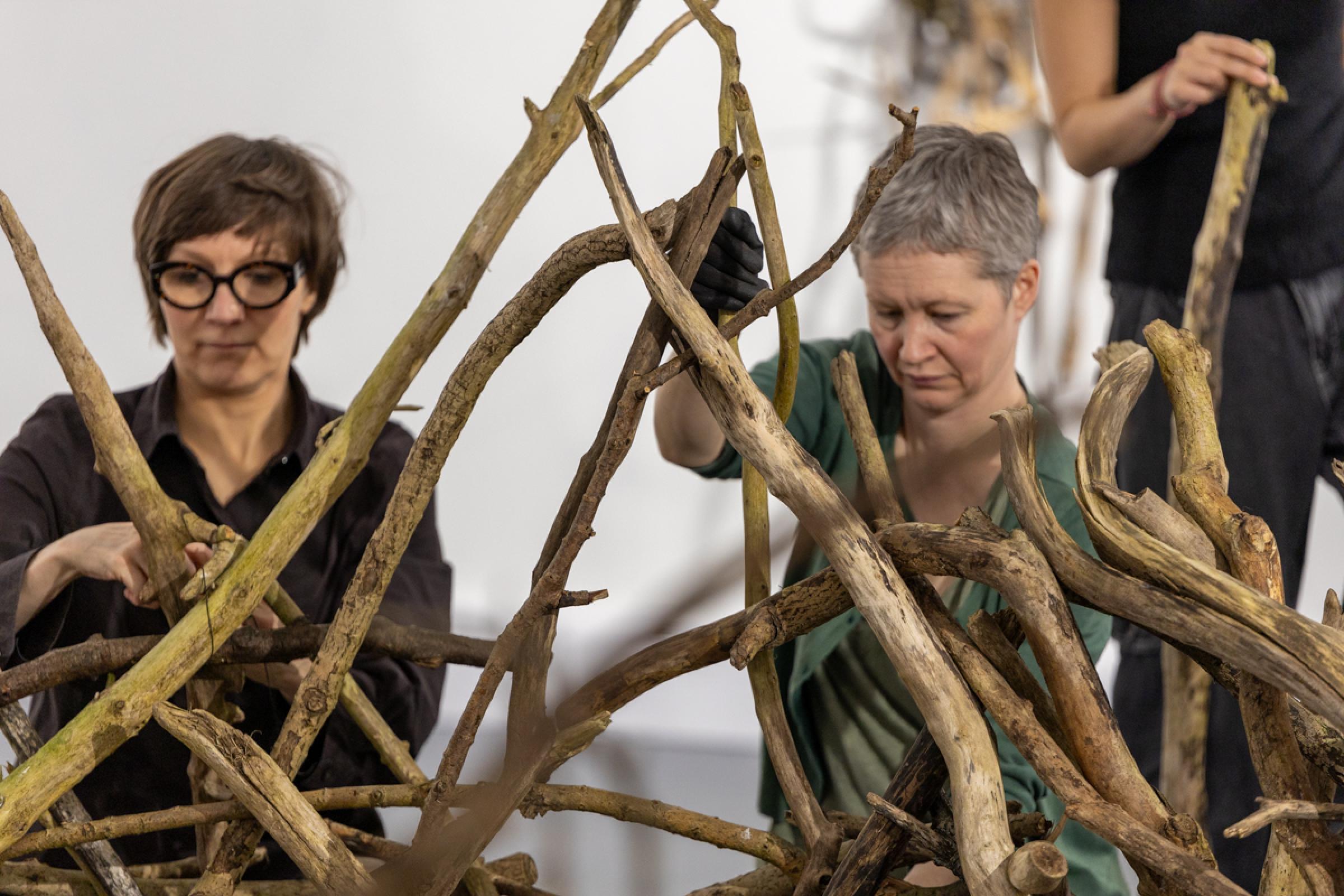
Using natural materials collected nearby - driftwood, grasses, fabric scraps and garden waste from our homes - we created nests big enough to become spaces for talking, singing and simply being together. The latest iteration, within a gallery setting, also addressed feelings of unbelonging more directly by incorporating anti-bird spikes into its structure. These elements of hostile architecture embody the various forms of hostile systems and bordering practices that we must navigate. They also reflect broader issues of domination, and borders, and humanity’s fraught relationship with the more-than-human world.
Across all four events, I was struck by how naturally people responded to the invitation to participate. The idea of building a nest together seemed to speak to something instinctive—something both playful and profound. The simplicity of the activity, coupled with its symbolic richness, created an inviting space for people of all ages and backgrounds to join in. It generated excitement, connection, and a strong sense of shared purpose.
And yet, making an invitation truly effective - particularly in participatory work-is never simple. As someone working outside my home region, with limited time and resources to build long-term relationships beforehand, I was acutely aware of the challenges in reaching people in meaningful ways.
To help extend the invitation, Lancaster Arts commissioned artist Anthony D Padgett, whose expansive and community-embedded practice in the area proved invaluable. Anthony played a vital role in raising awareness of the event - speaking directly with local people, leafleting, and building a sense of curiosity and welcome around the project. His conversations fostered the kind of warmth and trust that only personal contact can achieve. In Anthony’s words, the event “sold itself” but only once people knew about it. The concept clearly resonated, but it was the act of being invited – of being seen, approached, and welcomed that made participation possible.
The event in Heysham, which Anthony supported most intensively, was by far the best attended. This was likely due to a combination of factors: the beautiful weather, a scenic and accessible location, and the human-scale, relational approach Anthony took to spreading the word. It was a vivid example of how crucial the act of invitation is – not only as a practical means of gathering people, but as part of the artistic process itself. To invite someone is already to extend a form of hospitality; it is the first gesture of sanctuary.
The event in Hull was perhaps the most intimate, and the participants most attuned to the ideas behind the project. This was likely because we had met beforehand through a workshop, where relationships had already begun to form and we had started exploring the themes together. In contrast, the nest building in Morecambe—though part of a larger festival that might have promised greater footfall, felt more diffuse. The nest building itself felt a little lost among the wider festival and was a reminder that presence does not always equal engagement, and that depth of connection cannot be substituted by numbers alone. However, the Morecambe nest had perhaps the most meaningful ‘afterlife’, going beyond the moment of collaborative building. It became the focus for the culmination of the whole Landing festival weekend, as community singers led by More Music’s Anni Tracy filled the nest with sound, performing a newly-commissioned song based on words crowd sourced from festival visitors throughout the weekend. The song began as participants completed the final Cockles of My Heart audio walk, coming together form this closing moment. Following the festival, the nest structure continued to exert its invitation, with people using the space as a shelter and meeting place.
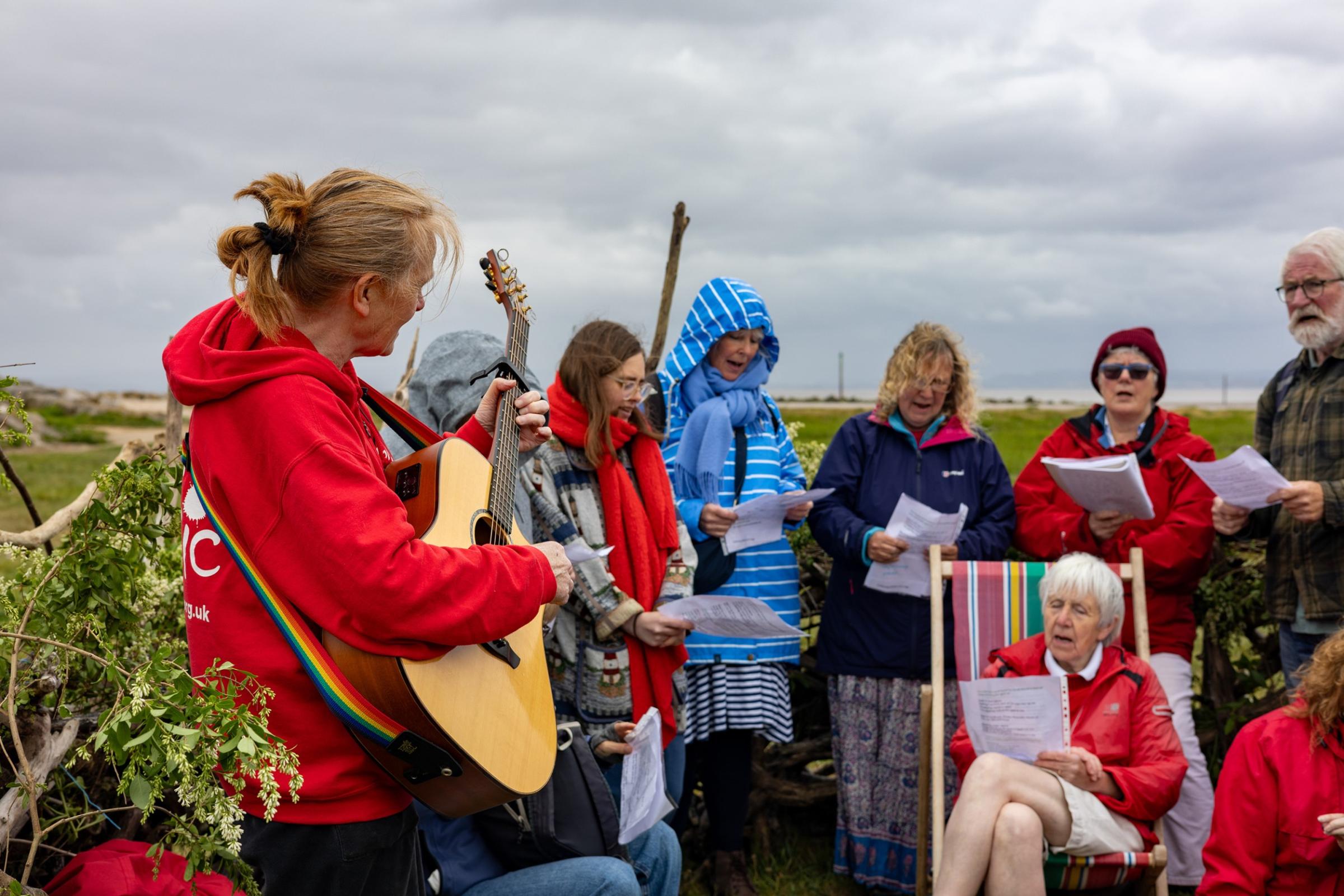
These nests - however different - were all crafted communally from foraged and donated materials, shaped by many hands. They embody the intersections of belonging and unbelonging. Rooted in both ecological and social questions, they remind us that the natural world is our first and most enduring host. They invite us to consider how we build home in times of displacement and crisis - not just for ourselves, but with one another, across difference.
Whether seen as installation, social sculpture, performance, or participatory ritual, Nest is about more than the final object. It is about the radical, hopeful gesture of making sanctuary together.
You can visit Henna’s current exhibition Lintukoto/Haven in the Peter Scott Gallery at Lancaster University until 16 May (open weekdays 11am-5pm). You can book your free place on Henna’s Building Belonging workshop in the gallery on Thursday 1 May. The workshop will include conversations exploring the themes outlined in this blog as well as miniature nest building. Drop in anytime between 2-4pm. Please book here.

